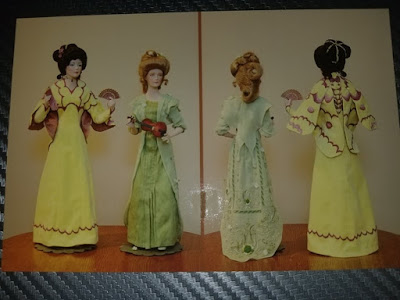Gene Stratton Porter retrospective, part 1: Freckles -- by Elleanore G Vance
Gene Stratton-Porter was the Nora Roberts of her era, having sold more than 10 Million copies by the time of her death in 1924. She was Disney before Disney was Disney; a rare artist who got to enjoy the popularity of her work and the riches it brought. Born August 17, 1863 in Wabash County Indiana, young Geneva was fascinated by the natural world around her. The locals would come to call her The Bird Woman due to her own prowess with healing and raising local birds.
In 1884, Gene met Charles Porter; two years later they married, and a year after that their only child Jeanette was born. Sometime after that, Gene began writing nature pieces for magazines, learned photography and watercolor so that her pieces weren't just illustrated, but illustrated with lifelike full color. Her first accredited novel was Song of the Cardinal in 1903. She would go on to write eleven more novels, eight nature studies, two books of Poetry, and four collections of stories and children's books.
We are going to focus on three of her early works in this two-part blog series. This week we'll take a look at Freckles (1904), then next week move to A Girl of the Limberlost (1909) and The Harvester (1911). Together these novels form a sort of literary triptych, giving the reader a full and complex view of the Limberlost marshland in north central Indiana. Each story stands on its own, and you do not have to read them all together, but my personal opinion is that they are best appreciated when read together, in publication order.
Freckles is the story of an orphan from Chicago, not as old as 20, who is missing his right hand. The only name the boy has is "Freckles", and as soon as the orphanage considered him grown, they bonded him out to cruel farmer, whom Freckles has just run away from. Hoping for honest work, Freckles walks in to a lumber camp. The others in the camp write Freckles off immediatly, as he only has one hand, is too young and too skinny, but the Boss, a Scotsman called McLean, sees something in Freckles. The boy's presence seems to call to him. A few questions later and Freckles is now the Limberlost guard. His job is to walk along the wire perimeter twice a day, keeping an eye out for signs of lumber theives. Freckles is billetted with the Duncan family, and soon is considered a regular member of the household.
Over time, Freckles achieves great things along his line; the birds will eat from his hands, and he obtains books to learn them all by name. He transplants plants he finds all along the line to one specific area where Freckles stops for his midday meal, and with all of his work, builds a living cathedral. When Freckles finds a vulture's nest, he tells Duncan who directs him to town to see "The Bird Woman", who will want to know. This allows Freckles to cultivate a friendship with the daughter of a local businessman who is an assistant to The Bird Woman called The Angel, who has stolen his heart with a single look.
Freckles is learning about his environment, we the reader learn, too, so its organic storytelling. Freckles' dialog and a few of the other supporting characters, is written in dialect, so prepare yourself for that. Also, lumber pirates are the men in black hats. Like the B movies that would come later, this is very much that type of story. Also, some of the occurances may make a modern reader scoff, but remember what I said about Disney. Gene admitted that she only wrote about good people because the world, even then, had enough evil in it, so keep that in mind as you read. This is as much the world she saw and lived in as it was the world she wanted to be in.
Rating: ⭐⭐⭐⭐⭐/5
 |
| Reviewer Elleanore G. Vance |
A native of Bartholomew County, Indiana, and a recent transplant to Pennsylvania's Susquehanna Valley, Ms.Vance is a wife and fur-mom to 6 (5 dogs,1 cat). She has been a lifelong bookworm, boasting more than 1500 novels in her list of "read" books. Favorite authors include but are not limited to: Drew Hayes, Agatha Christie, Marissa Meyer, Gene Stratton-Porter, Ira Levin, and Shirley Jackson.



Comments
Post a Comment